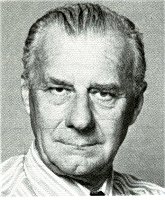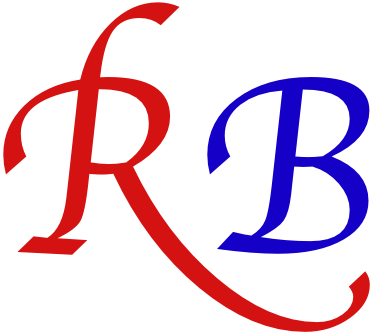Home  Your feedback I need a better photo, please!
Your feedback I need a better photo, please!
Douglas Hey

1914 - 2008
First Director of the Department of Nature Conservation of the Cape Province, 1952 - 1979
Author of publications on Nature Conservation
Nature Conservation in South Africa owes much to his drive and enthusiasmDouglas Hey was born on 23 November 1914 in East London and grew up in the Eastern Cape. His father was Sydney Hey, a postmaster and author of the now classic book, The Rapture of the River.
After matriculating from Maclear High School he studied Zoology and Chemistry at Rhodes University (BSc) and Stellenbosch University (MSc and D Sc, both cum laude, 1942). He taught for a year at Lovedale College in the Eastern Cape and then worked as a researcher at the Jonkershoek Hatchery in Stellenbosch and at Leuven University in Belgium.
1942: Director of Inland Fisheries
1949: Diplomas in Limnology, Hydrobiology and Pisciculture from the University of Louvain, Belgium.
1952: Director of Nature Conservation of the Cape Province
1959: Study Tour of the United States on an American Leader Exchange bursary
1970: Visiting Professor to Colorado State University
1972: planned and helped install a degree course in Nature Conservation at the Department of Forestry, Stellenbosch University, where he lectured.
1974: Visiting Professor to Utah State University
Douglas Hey retired as Director of Nature Conservation of the Cape Province in November 1979. He was a fellow and the treasurer of the Royal Society of South Africa, an active member of the Council of the Zoological Society and served on the Boards of Trustees of a number of organizations, among them the South African Museum and the National Botanic Gardens.
Douglas Hey died on 18 March 2008.
'My father's early love of nature arose from a childhood spent in the small towns of the Eastern Cape, where my Grandfather, Sydney Hey, a postmaster in his professional life, spent his free time angling in the rivers and fresh-water streams, and gathering material for his now classic work, The Rapture of the River.
After completing his zoological studies and research at Rhodes and Stellenbosch Universities, my father started his career in Inland Fisheries in the beautiful Jonkershoek Valley near Stellenbosch, also spending time studying limnology in Belgium and the fisheries projects in the Belgian Congo. In 1952, the new Department of Nature Conservation of the Cape Province was founded, with my father as first Director. A position which he held until his retirement in November 1979. This was followed by a brief period as head of the National Monuments Council. During these years, in which numerous nature reserves and natural areas were proclaimed throughout the Province, my father paid particular attention to public education, with his attractive pocket-sized field guides on protected Fauna and Flora. We should briefly try to recall the size of the Cape Province at the time, stretching to Kokstad, Matatiele and Swartberg in the East, and to the banks of the Orange River in the North. My father's regular tours of inspection thus entailed a huge amount of driving over his 28 years as Director. Some may still recall his popular radio programme Talking of Nature, shared with a team of naturalists which included Dr. Geoff McLachlan and the late Professor Gerrie Broekhuizen of UCT, his regular column entitled Bewonder en Bewaar in Die Burger, and his many popular books on nature, produced in both English and Afrikaans, including Wildlife Heritage (Natuurerfenis), and Water, Source of Life (Water Betower My), to name just two - books in which my late Mother, who was far more punctilious in matters of grammar and syntax, played an important role. I should mention that Mrs. Eileen Kent, who is present with us to-day, rendered my father invaluable editorial assistance with Water, Source of Life.
Included in his brief of Nature Conservation was museum services, where he introduced the sensible recommendation that each museum, rather than attempt to build general collections, should aim to represent aspects unique to the particular area in which it is situated. Thus we have, for example, the 1820 Settlers' Museum in Grahamstown, the Shipwreck Museum in Bredasdorp, the Museum of Farming Implements and Equipment at Albany.
My father's gifts in this area were, however, not those of the historian but of an efficient and imaginative organiser, a builder of successful teams and scientific collaboration. In the course of his work, friendships arose with a number of remarkable people, such as the naturalist Dr. S. H. Skaife of Hout Bay and, at the East London Museum, Dr. Marge Courtenay-Latimer, the discoverer of that lost species of primaeval fish, the caelacanth [She is a leading personality in a wonderful book, by the way, A Fish Caught in Time].
I should also mention here his services to the international cause of Nature Conservation through a long association with the World Wildlife Fund (WWF), whose foundation came about in part through the efforts of the late Dr. Anton Rupert. My father's work was well recognised through the receipt of numerous medals and awards, both from this country and from overseas, which included the Cape Tercentenary Foundation medal, the freedom of the City of Cape Town, and the State President's Award for Meritorious Service. I shall not attempt a list of these here, but rather mention that he considered these as awards, not so much to himself alone, but to the teams of enthusiastic co-workers and colleagues which he had built up throughout the years. Towards the end of his official career in Nature Conservation, he was particularly proud of the service which he was able to render to this city through the Table Mountain Commission of 1978, and its report of recommendations for the preservation of the entire Table Mountain chain right down to Cape Point.'
From the valedictory address by John Douglas Hey, 26 March 2008
Download pdf of full text
Awards:
The Queen's Coronation Medal 1953
Danish Galathea Medal for outstanding research in Limnology 1955
Senior Captain Scott Memorial Award 1996
State Presidents medal
The freedom of the City of Cape Town
W.W.F Annual Award
State President's award for meritorious service 1981
Cape Tercentenary Foundation medal for Lifetime Services to Nature conservation 2000
Books:
Ons Binnelande Visserye, 1944
A nature conservation handbook,
Cape Provincial Administration, Dept. of Nature Conservation, 1960
Handboek van Natuurbewaring, 1962
Fish Keeping in Ponds and Aquaria, 1965
Wildlife heritage of South Africa, Oxford University Press, 1966
Practical freshwater fish culture, Department of Nature Conservation, 1971
Natuurerfenis
Bewonder en bewaar,
Tafelberg, 1972
Water is lewe,
Tafelberg, 1975
Water the Source of Life, Oxford University Press, 1977
Table Mountain
The fauna & flora of Southern Africa and their conservation,
Dept. of Nature and Environment Conservation, 1982
Water and wildlife,
Timmins, 1986
A nature conservationist looks back,
Cape Nature Conservation, 1995 * * *
Obituary By John Yeld : A pioneering guardian of Cape nature is dead at 93 (Found at the Alumni webpage of Rhodes University)A pioneering guardian of Cape nature is dead at 93
A key chapter in the history of nature conservation in the Cape has closed with the death in Pinelands of veteran conservationist Douglas Hey. He was 93.
In a valedictory address at the memorial service at the Pinelands Presbyterian Church, one of Hey's two sons, University of KwaZulu-Natal physics professor John Hey, said his father's love of nature had been nurtured during a childhood spent in the small towns of the Eastern Cape where his father; Sydney Hey, a postmaster, had spent his free time fishing in the rivers and freshwater streams, gathering material for his now-classic work on fly-fishing, The Rapture of the River.
The son followed in his father's fishing footsteps: after completing his zoological studies and research at Rhodes and Stellenbosch universities, he began his career with the Inland Fisheries Department in the beautiful Jonkershoek Valley near Stellenbosch.
He also studied limnology in Belgium and fisheries projects in the then-Belgian Congo.
In 1952, the Department of Nature Conservation of the Cape Province was founded and Hey appointed its first director - a position he held until retirement in November 1979. He also served briefly as head of the then-National Monuments Council.
Hey paid particular attention to public education, producing pocket-sized field guides on protected fauna and flora. He hosted a popular radio programme Talking of Nature, which he shared with a team of naturalists, and wrote a regular column, Bewonder en Bewaar (Admire and Conserve), for Die Burger newspaper. His many popular books on nature, published in English and Afrikaans, included Wildlife Heritage and Water Source of Life.
The province's museum services then fell under Nature Conservation, and Hey introduced the policy that each museum should aim to represent aspects unique to its area, rather than have duplicated general collections. This manifested as the 1820 Settlers' Museum in Grahamstown, the Shipwreck Museum in Bredasdorp, and the Museum of Farming Implements and Equipment in Albany.
In the course of his work, Hey became friends with other prominent conservationists and naturalists, notably Dr S H 'Stacey' Skaife of Hout Bay and Dr Marge Courtenay-Latimer at the East London Museum, discoverer of the famous coelacanth, the 'living fossil' fish.
He won numerous awards and honours in South Africa and internationally, including the Cape Tercentenary Foundation medal, Cape Times Centenary Medal, the Freedom of the City of Cape Town, and the State President's Award for Meritorious Service.
Hey was probably best-known for his one-man commission of inquiry into the control and management of Table Mountain, producing a report in 1978 that was instrumental in the proclamation and subsequent conservation of the Cape Peninsula Protected Natural Environment, roughly the area of what is now the Table Mountain National Park.
The guiding principles in Hey's efforts in conservation were those of people's curatorship and stewardship of nature and their duty to exercise care over natural resources and to be responsible in using them, Hey jun. said.
'He discusses these ideas in his autobiography, A Nature Conservationist Looks Back. - One of two passages read at Hey's service was written by naturalist Rachel Carson, most famous for her seminal work on the impact of pesticides, Silent Spring.
She wrote: 'It is a natural and not an unhappy thing that life comes to an end, when that intangible cycle has run its course. For all at last return to the sea - to Oceanus, the great ocean river, like the ever-flowing stream of time, the beginning and the end.'
CAPE ARGUS, 17 April 2008
 www.StellenboschWriters.com © Rosemarie Breuer
www.StellenboschWriters.com © Rosemarie Breuer
 Books
Books
